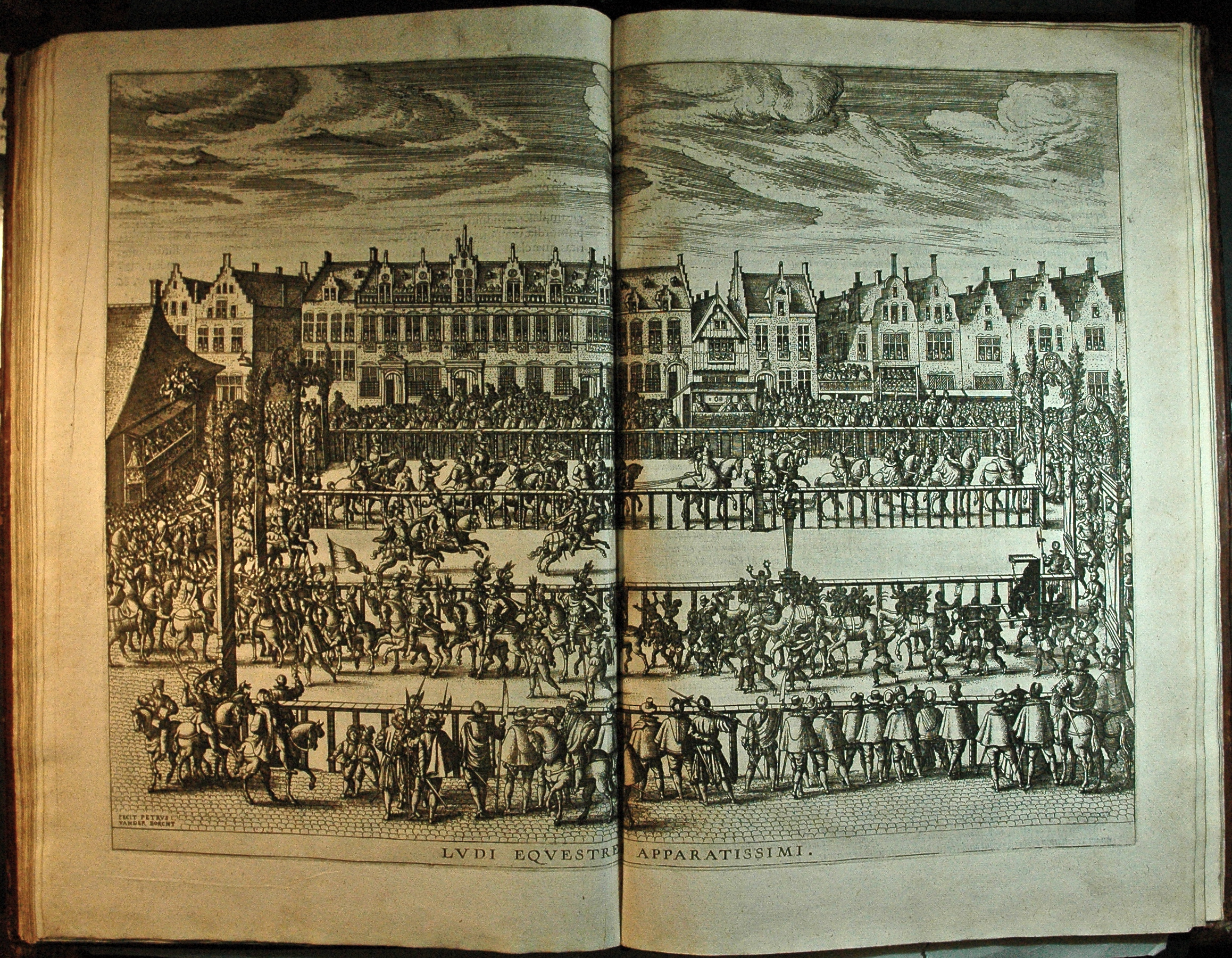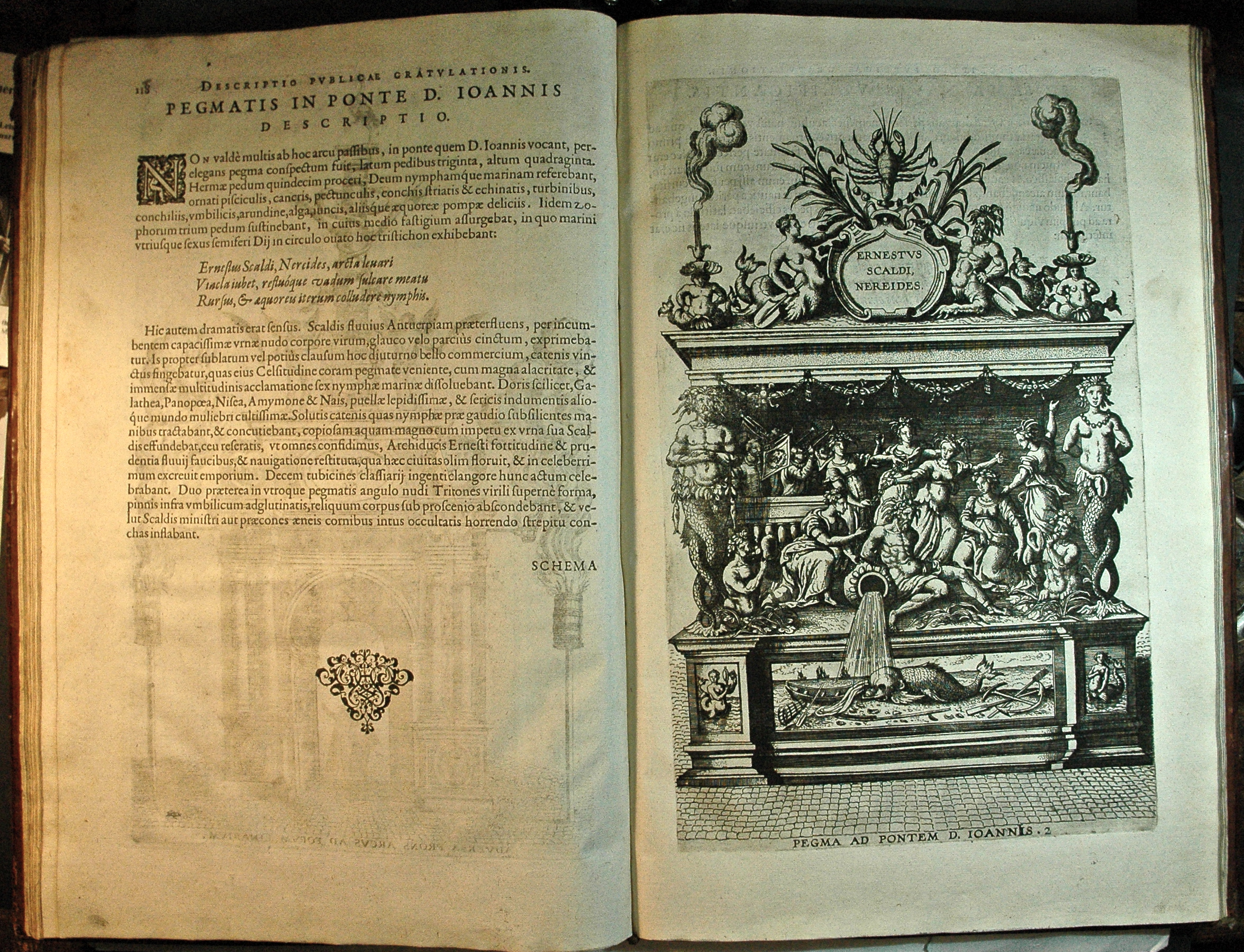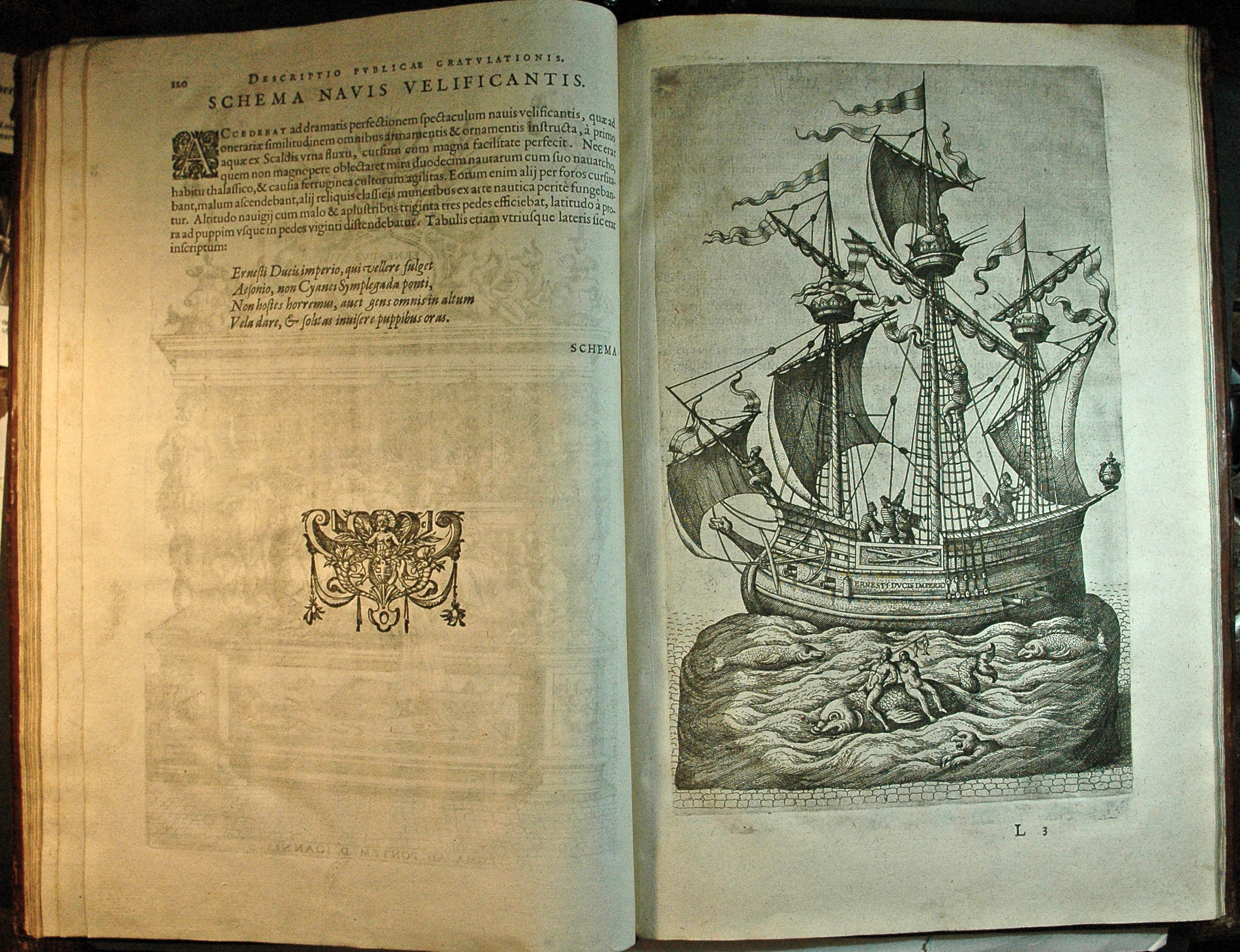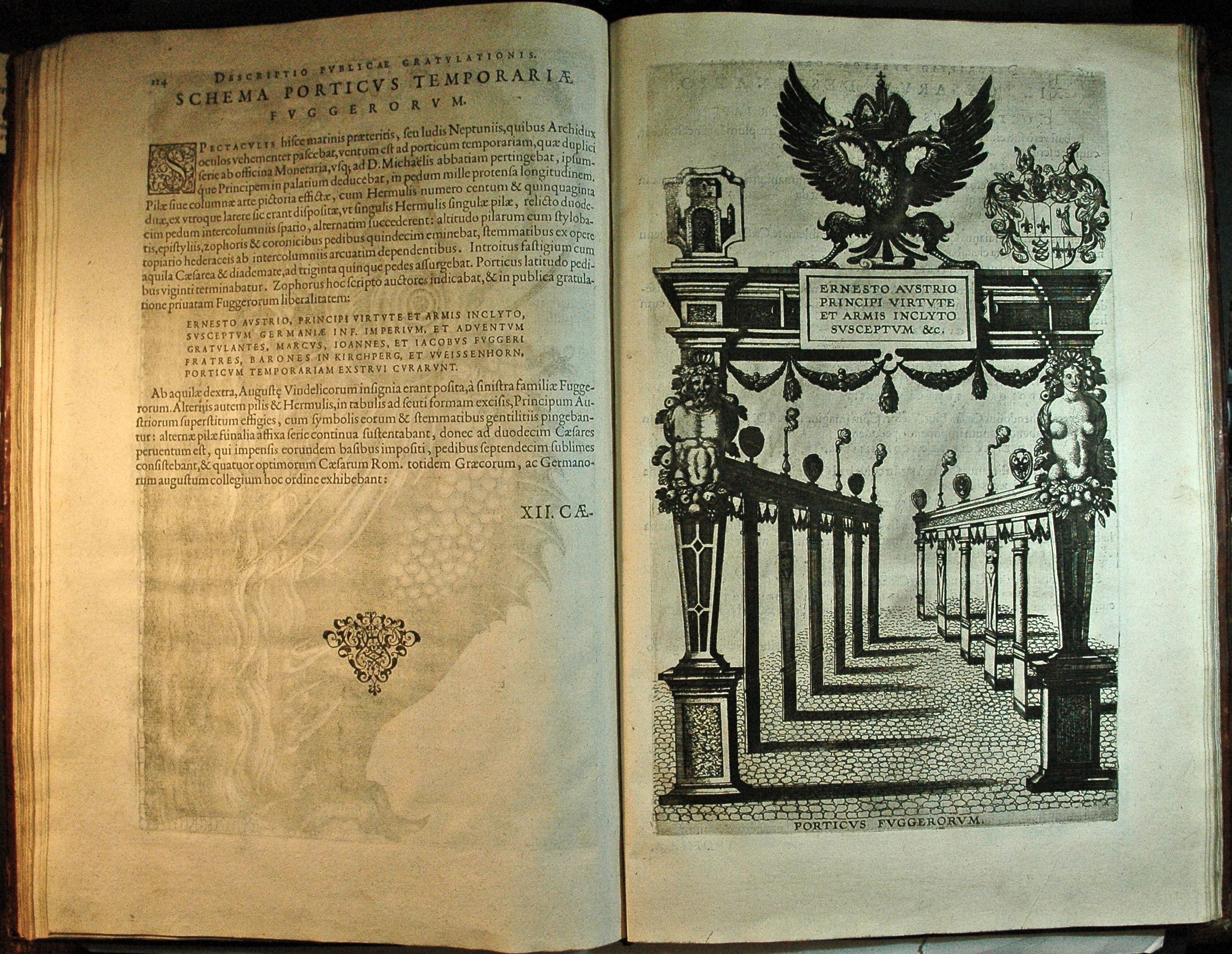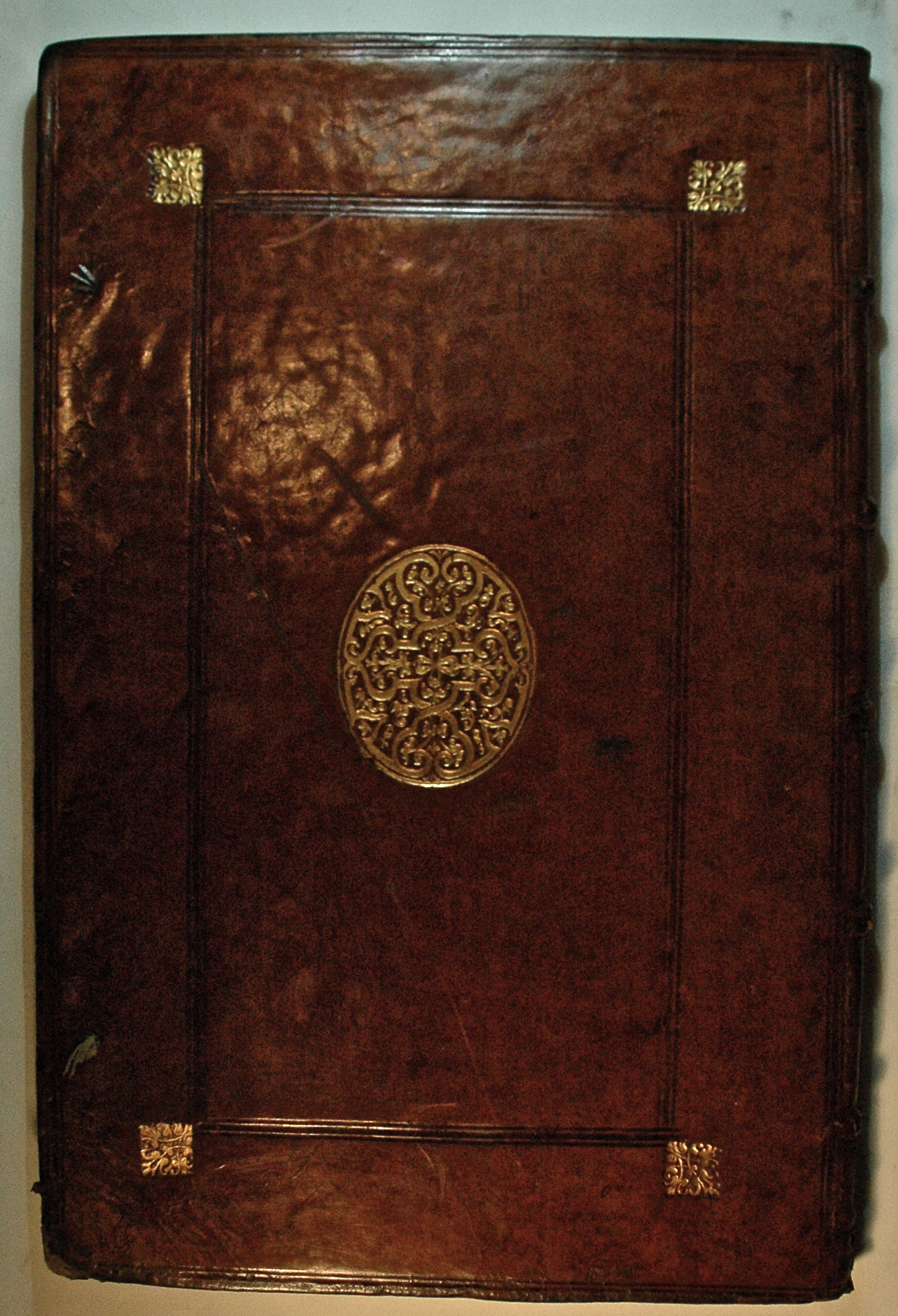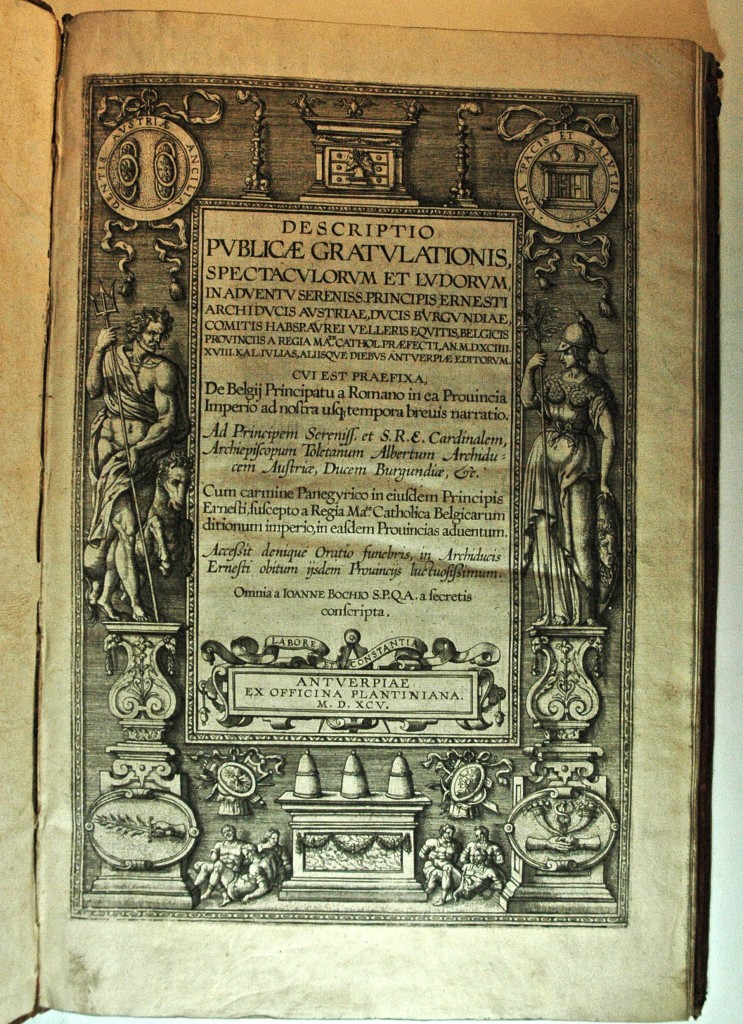BOCHIUS, Joannes
FIRST AND ONLY EDITION
Descriptio Publicae Gratulationis Spectaculorum et Ludorum..
Antwerp, ex Officina Plantiniana, 1595£11,500.00
Folio. pp. 174 [ii]. Roman and italic letter, historiated woodcut initials, head-and tail-pieces, title within engraved architectural border depicting Neptune and Athena, second t.p. after prelims within architectural border with allegories of Time and Fame, topped by double-headed eagle, cherubs holding globes. 29 full-page engravings and 4 double-page engravings by Pieter van der Borcht (1545-1608), all in extraordinarily clear, strong impression. Light age yellowing, occasional fingermarks to margins, slight tear to inner margin at F3, but a lovely, clean, fresh and well-margined copy in handsome contemporary calf, boards treble-ruled in blind, central gilt medallion, floral ornaments in each corner and six spine compartments, spine repaired at head.
FIRST AND ONLY EDITION of this magnificent festival book celebrating the entry of Archduke Ernst of Austria into Antwerp on 14 June 1594. The condition and detailing of the engravings indicates this must have been one of the earliest copies off the press. They were executed by Pieter van Der Borcht after drawings by Cornelius Floris II and Joos de Momper from the designs of Martin de Vos. The first double-page engraving depicts Ernst’s parade approaching the city, images of the city entrance, the columns, stages, and arches erected in the town in honour of the occasion, the city theatre, and a two-page musical score for 6 voices of the song performed to welcome the Archduke. The pageantry continues with an engraving of the 27-foot statue erected in the marketplace of the giant Antigonus who once controlled Antwerp and was known for cutting off the right hands of mariners who did not pay him tribute. The city was liberated by another giant, Brabo, who cut off Antigonus’ own hand – the legendary origin of the hands on the city’s heraldic arms. The festivities end with nautical displays, fireworks and jousting, each frozen in time by their own splendid double-page engravings. Each is accompanied by descriptions of the festivities, and a commentary on their allegorical significance, by Joannes Bochius (1555-1609), a prominent lawyer and poet from Brussels who was an active official in the local government.
The work provides a vivid depiction of the pageantry of the age and, the exuberant showmanship of a hopeful city: Antwerp had suffered sack, siege and plunder at the hands of Spaniards and Italians throughout the 1570s and 80s, its population halved to 55,000 by 1589. “What is unmistakable, once the real plight of the city is realized, is the extent to which the various spectacles prepared for 1594 convey the city’s desire to put a brave front on its position, asserting, particularly, through the allegories on the arches of the foreign merchant communities, that the golden age which the city had enjoyed under Charles V was not lost beyond recall…” Whether or not Ernst, a minor member of the Hapsburg family could deliver the town remains to be seen: “His relative unimportance is emphasized by the fact that Ernst was never invested with the titles of Margrave of Antwerp or Duke of Brabant” and thus was not entitled to the full ceremonial welcome. (Davidson and Van der Weel, cit. infr.). To add to the misfortune, Ernst died in Brussels 8 months later in February 1595, so the work ends with a funeral oration, a memorial as well as a tribute.
BM STC Nr. 36. Index Aureliensis IV 120.566. Graesse I 458. Adams B 2208. Landwehr, Splendid Ceremonies 50. Berlin 2944. Peter Davidson and Adriaan van der Weel \\\"Introduction: The Entry of Archduke Ersnt into Antwerp in 1594 in Context\\\" Europa Triumphans: Court and Civic Festivals in Early Modern Europe, Volume 2, 492. Not in Fowler.In stock



